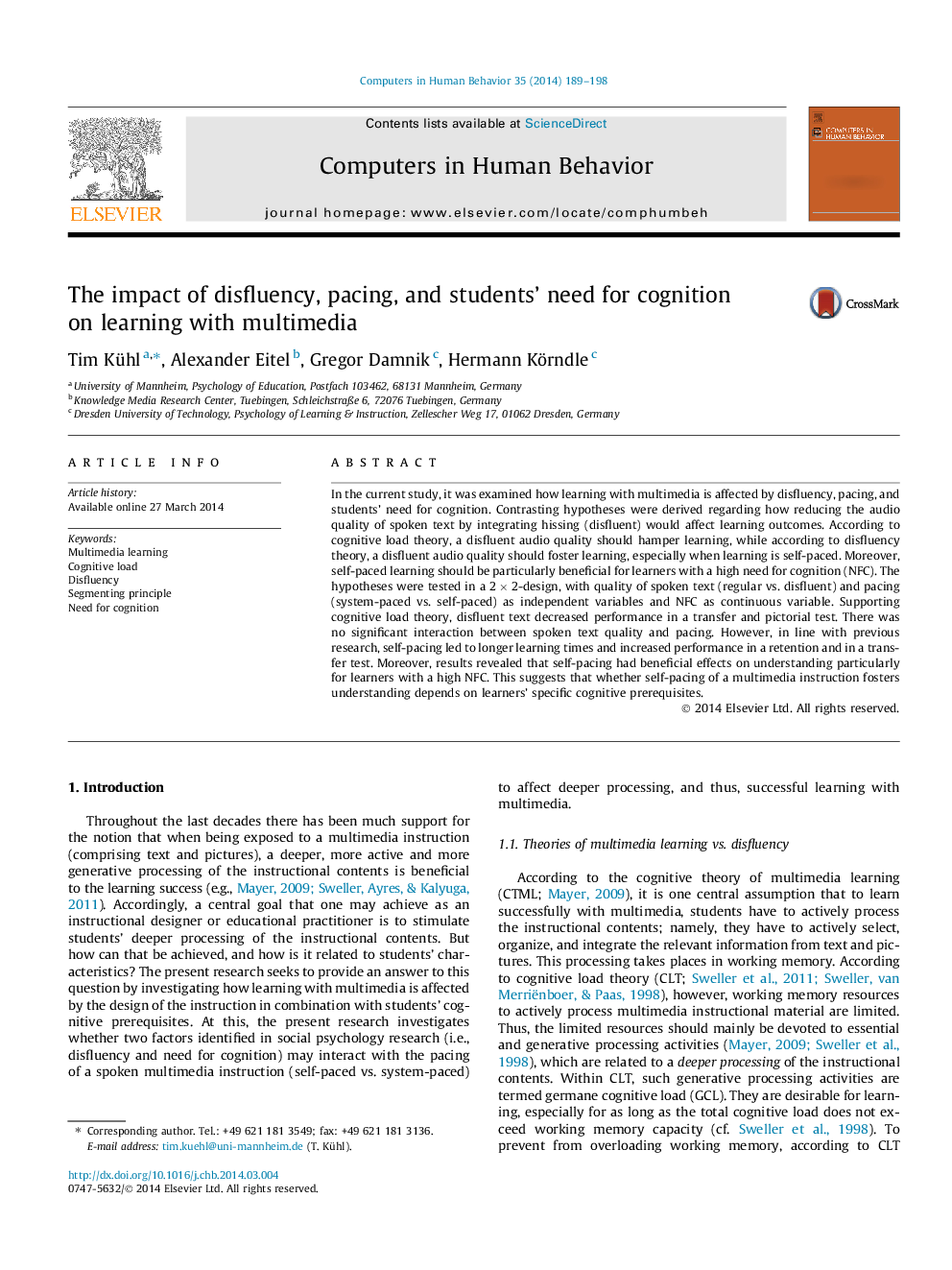| Article ID | Journal | Published Year | Pages | File Type |
|---|---|---|---|---|
| 350518 | Computers in Human Behavior | 2014 | 10 Pages |
•A regular audio quality fostered learning compared to a disfluent audio quality.•There was no interaction of spoken text quality and pacing (system vs. self-paced).•Self-pacing led to longer learning times and fostered understanding.•Self-pacing was particularly beneficial for learners with a high need for cognition.•Self-pacing reduced the perceived difficulty of the instructional material.
In the current study, it was examined how learning with multimedia is affected by disfluency, pacing, and students’ need for cognition. Contrasting hypotheses were derived regarding how reducing the audio quality of spoken text by integrating hissing (disfluent) would affect learning outcomes. According to cognitive load theory, a disfluent audio quality should hamper learning, while according to disfluency theory, a disfluent audio quality should foster learning, especially when learning is self-paced. Moreover, self-paced learning should be particularly beneficial for learners with a high need for cognition (NFC). The hypotheses were tested in a 2 × 2-design, with quality of spoken text (regular vs. disfluent) and pacing (system-paced vs. self-paced) as independent variables and NFC as continuous variable. Supporting cognitive load theory, disfluent text decreased performance in a transfer and pictorial test. There was no significant interaction between spoken text quality and pacing. However, in line with previous research, self-pacing led to longer learning times and increased performance in a retention and in a transfer test. Moreover, results revealed that self-pacing had beneficial effects on understanding particularly for learners with a high NFC. This suggests that whether self-pacing of a multimedia instruction fosters understanding depends on learners’ specific cognitive prerequisites.
